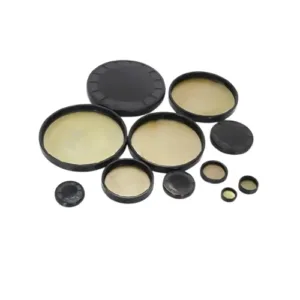Understanding Oil Seals, Rotary Shaft Oil Seals, and Rubber End Covers
In modern mechanical systems, reliable sealing components are crucial for enhancing performance, ensuring long-term reliability, and protecting sensitive parts from dirt, dust, and other contaminants. Among the most important sealing elements are oil seals, rotary shaft oil seals, and rubber end covers. These components find wide applications across various industries—from automotive engines and gearboxes to heavy machinery, pumps, and compressors. In this article, we will explore how these seals function, review their different types and materials, and discuss how to choose the right products for your specific application.


1. What Are Oil Seals?
1.1 Definition and Purpose:
Oil seals, sometimes called grease seals, are rings designed to contain lubricants (like oil or grease) and keep dirt, water, and other contaminants out. They maintain a tight seal around moving or stationary parts to ensure smooth operation and prevent premature wear.
1.2 Common Applications:
- Automotive: Engines, gearboxes, wheel hubs, and differentials.
- Industrial Machinery: Pumps, compressors, and production equipment.
- Marine & Agricultural: Gear drives in boats, tractors, and harvesters.
1.3 Key Components of Oil Seals:
- Sealing Lip: The flexible edge that creates a tight seal against the shaft.
- Metal Case: A rigid outer shell that helps the seal maintain its shape.
- Garter Spring: A spring around the lip that applies consistent pressure to ensure an effective seal over time.
2. Rotary Shaft Oil Seals: A Specialized Type of Oil Seal
2.1 Function:
Rotary shaft oil seals are specifically designed to seal rotating shafts. They prevent lubricant leakage and block contaminants like dust and dirt from entering the system. This keeps parts running smoothly and efficiently.
2.2 How They Work:
The sealing lip stays in contact with the rotating shaft’s surface, supported by a garter spring. Even under varying speeds, pressures, and temperatures, the lip maintains a stable, leak-proof seal.
2.3 Types of Rotary Shaft Oil Seals:
- Single Lip Seals (SC): Basic seals for environments with low dust or dirt exposure.
- Double Lip Seals (DC): Have an extra dust lip for enhanced contamination protection.
- External Skeleton Seals (TB, SB, TA): Feature reinforced structures for better heat dissipation and stability in harsh conditions.
- Dual-Spring Seals (DC): Offer extra sealing strength for high-pressure applications.
- PTFE Rotary Seals: Made for high-speed, high-temperature environments, and resistant to chemicals.
2.4 Applications:
- Automotive: Crankshafts, camshafts, and differentials.
- Heavy Machinery: Gearboxes, hydraulic pumps, and motors.
- Specialized Industries: Food and pharmaceutical equipment, where cleanliness is paramount.
3. Rubber End Covers: A Critical Dust Protection Solution
3.1 Definition and Role:
Rubber end covers, such as EC end covers, are static seals placed at the shaft ends. While standard oil seals include a dust lip, adding an end cover provides an additional barrier, further shielding the shaft and internal seals from dust, dirt, and other external contaminants.
3.2 Key Features of EC End Covers:
- Enhanced dust and dirt protection.
- Extended service life of both shafts and oil seals.
- Simple installation at the outer edge of the shaft.
3.3 Common Materials for End Covers:
- Nitrile Rubber (NBR): Offers good oil resistance at an affordable cost.
- EPDM: Excellent weather resistance for outdoor machinery.
- Silicone Rubber: Handles extreme temperature variations.
3.4 Applications:
- Automotive and Industrial Equipment: Provides extra dirt protection in harsh environments.
- General Machinery: Useful wherever extended seal life and cleanliness are required.
4. Common Types of Oil Seals and Their Functions
- Single Lip Seals (SC): Suitable for basic sealing needs in relatively clean conditions.
- Double Lip Seals (DC): Adds a dust lip for operations in dusty or dirty environments.
- External Skeleton Oil Seals (TB, SB, TA): Ideal for high-speed, high-temperature operations due to efficient heat dissipation and rigidity.
- Dual-Spring Oil Seals (DC): Designed for systems under higher pressure, offering superior sealing performance.
- Rotary Shaft Seals (TC, TG): Widely used across various machinery thanks to their durability and efficiency.
- Specialized Seals (PTFE Seals): Perfect for high-speed or chemically harsh conditions.
5. Materials Used in Seals and End Covers
5.1 Importance of Material Selection:
Choosing the right material ensures compatibility with the operating environment—temperature ranges, lubricants, and exposure to dirt, dust, or chemicals.
5.2 Common Materials:
- Nitrile Rubber (NBR): Great general-purpose material with strong oil resistance.
- Fluoroelastomer (FKM/Viton): Excellent resistance to high temperatures, chemicals, and wear.
- Silicone Rubber: Remains flexible in extreme temperatures but less oil-resistant.
- PTFE (Teflon): Exceptional resistance to chemicals, heat, and friction, ideal for demanding applications.
6. How to Choose the Right Sealing Solution
6.1 Factors to Consider:
- Operating speed, temperature, and pressure conditions.
- Exposure to dust, moisture, and harsh chemicals.
- The type of lubricant or fluid in use.
6.2 Application-Specific Selection:
- High-Speed, High-Heat Systems: Consider external skeleton seals (TB, SB, TA).
- Static Sealing and Dust Protection: Use EC end covers for an added layer of contamination control.
- Low-Contamination Environments: A single lip seal (SC) may be sufficient.
7. Maintenance and Replacement
7.1 Inspection Tips:
Regularly check seals and end covers for cracks, stiffening, wear, or damage. Early detection of problems helps prevent leaks and costly repairs.
7.2 Installation Guidelines:
Align the seal correctly and use proper tools to avoid damage during installation. A well-installed seal ensures a longer operating life.
7.3 Replacement Practices:
Promptly replace worn or damaged seals to maintain system integrity, prevent lubricant leaks, and avoid contamination.
8. Conclusion
Oil seals, rotary shaft oil seals, and rubber end covers play a vital role in protecting machinery components, enhancing longevity, and ensuring reliable performance. Understanding the various types—such as SC, DC, TB, TA, and PTFE seals—and choosing the right material and design for your conditions can significantly improve efficiency and reduce downtime. Adding EC end covers further boosts protection in demanding environments.
For professional guidance and top-quality oil seals, rotary shaft seals, and EC end covers tailored to your application, contact:
Website: drorubber.com
WhatsApp: +0086 15815831911
WeChat: +0086 13784044874
By selecting, installing, and maintaining the correct seals, you can extend equipment life, enhance operational efficiency, and ensure your machinery runs smoothly for years to come.





